Understanding Agricultural Measurements
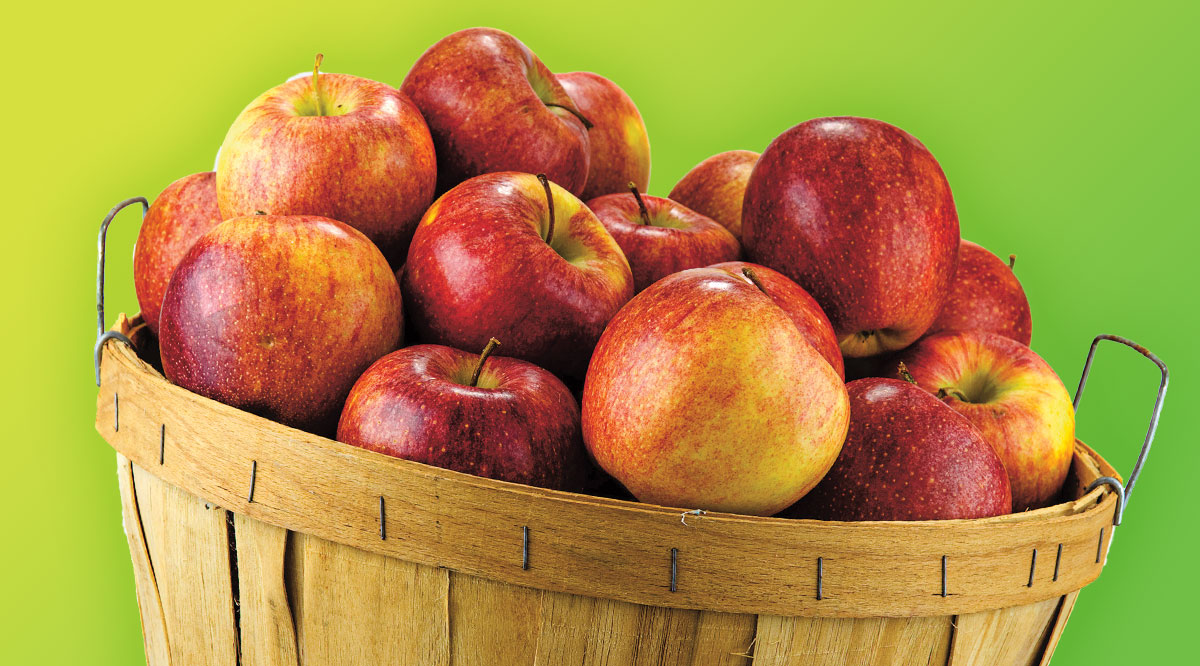
Understanding agricultural measurements is essential for farmers and traders in order to accurately quantify and trade their produce. Agricultural measurements, such as the bushel, play a crucial role in determining the volume of crops like grains and fruits. These measurements have been used for centuries to facilitate trade, harvest management, and distribution. The bushel measurement, in particular, has become a symbol of abundance and productivity in farming and commerce. Standardizing agricultural measurements ensures consistency and fairness in the industry, allowing for efficient trading and effective management of agricultural resources.
Introduction To Bushel As An Agricultural Measurement
The bushel is an important unit of measurement in agriculture, commonly used to quantify the volume of crops such as fruits and grains. It has a long history and is widely recognized as a symbol of abundance and productivity in farming and trade. The bushel measurement provides farmers and traders with a consistent and standardized way to determine the quantity of their produce, ensuring fair and efficient trading practices. With its practicality and timelessness, the bushel continues to serve as a vital tool in the agricultural industry, facilitating accurate measurement and management of crops.
Importance Of Standardizing Agricultural Measurements
Standardizing agricultural measurements is of utmost importance in ensuring fairness and efficiency in the industry. By establishing consistent units like the bushel, farmers, traders, and consumers can accurately quantify and compare the quantities and prices of different agricultural products. This standardization helps in promoting transparency and trust in the market, allowing for smooth trading and economic exchange. Moreover, standardized agricultural measurements enable effective management of resources, efficient storage, transportation, and distribution of crops, leading to improved productivity and profitability for farmers and better quality products for consumers.
The History Of Apples In Agricultural Trade
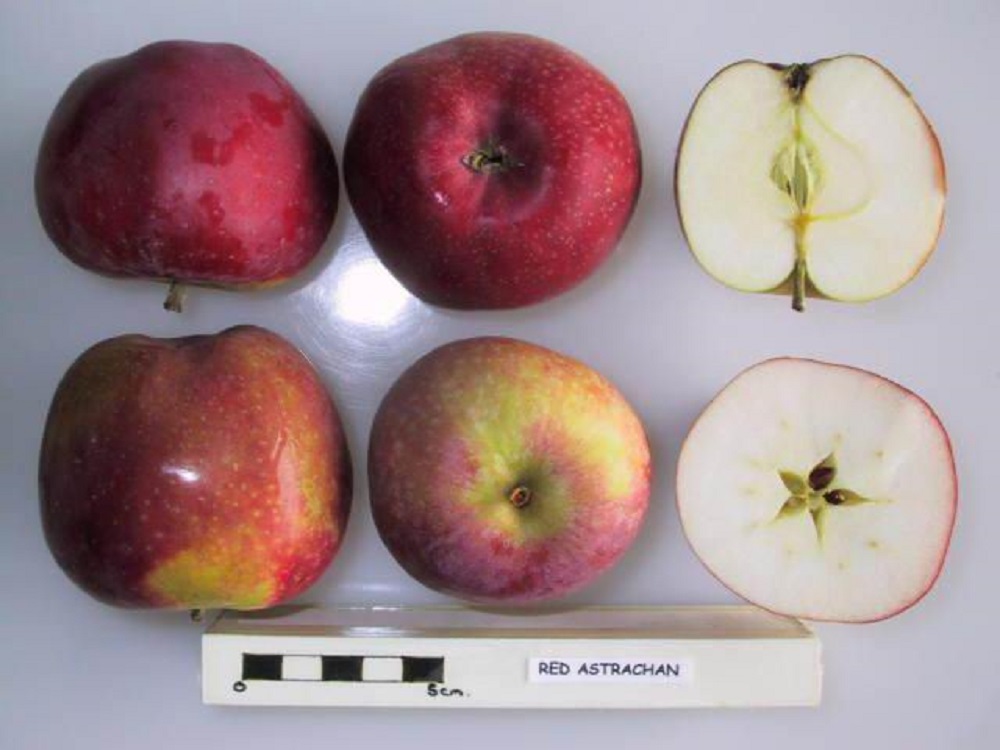
The history of apples in agricultural trade dates back thousands of years. Apples have long been a staple crop and a valuable commodity in various civilizations and cultures. They were traded along ancient trade routes, facilitating cultural exchange and economic growth. As apple varieties evolved and trade routes expanded, the demand for apples increased, leading to the establishment of market systems and trade networks. Today, apples continue to play a crucial role in global agricultural trade, with different varieties and flavors being enjoyed by people around the world.
Evolution Of Apple Bushel Size
Over the years, the size of the apple bushel has evolved, reflecting changes in agricultural practices and market demands. In the United States, the standard apple bushel size was initially set at 2,150.42 cubic inches. However, in 1914, it was revised to 2,747.715 cubic inches to align with the dry gallon measurement. This increase in bushel size allowed for a greater volume of apples to be packed and transported. Today, the USDA regulates the apple bushel size at 2,824 cubic inches, ensuring consistency and accuracy in apple trade. The evolution of the apple bushel size has facilitated efficient apple production and distribution, meeting the needs of consumers worldwide.
Impact Of Agricultural Measurements On Apple Harvesting And Distribution
Agricultural measurements, such as the apple bushel, play a crucial role in the efficient harvesting and distribution of apples. The standardized measurement allows farmers to accurately estimate the quantity of apples produced and plan for optimal storage and transportation. It also provides consistency in the market, allowing buyers to easily compare and trade apples based on their bushel size. Furthermore, agricultural measurements ensure fair pricing and enable precise inventory management, reducing the risk of waste or shortage. Overall, these measurements streamline the apple supply chain, ensuring a steady flow of apples from farms to consumers.
Types Of Bushels Used In Agricultural Practices
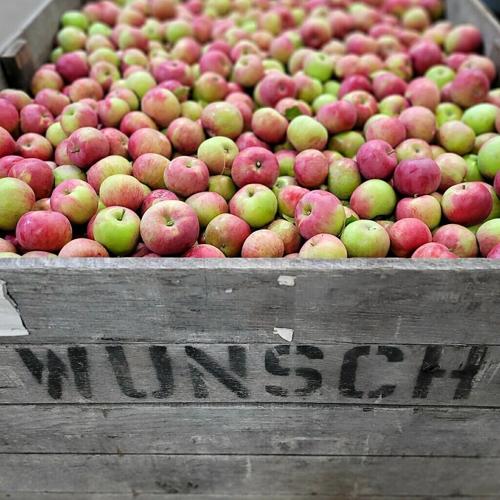
In agricultural practices, different types of bushels are used to measure various crops. The two common types of bushels are the dry bushel and the struck bushel. The dry bushel is used to measure dry commodities, such as grains and vegetables, and is equivalent to 2,150.42 cubic inches. The struck bushel, on the other hand, is used for measuring fruits, including apples. It has a larger volume of 2,747.71 cubic inches to accommodate the rounded shape of fruits. It is important to use the appropriate type of bushel to ensure accurate measurements in agricultural operations.
Different Varieties Of Bushels For Various Crops
When it comes to measuring different crops, there are variations in the types of bushels used. For example, when measuring dry commodities such as grains and vegetables, the standard dry bushel is used. However, when it comes to measuring fruits like apples, a struck bushel is utilized. Each variety of bushel has a specific volume that is tailored to accommodate the unique characteristics of different crops. This ensures accurate measurements and allows for efficient trade and distribution of agricultural products. Standardizing these bushel varieties is crucial for maintaining consistency and precision in agricultural practices.
Bushel Conversion Rates For Apples And Other Produce
Bushel conversion rates vary depending on the type of produce being measured. For apples, a bushel typically weighs around 40 pounds and contains approximately 125 apples. However, different crops may have different conversion rates. For example, a bushel of peaches may weigh around 50 pounds. These conversion rates are important for farmers and distributors to accurately measure and trade agricultural products. By standardizing bushel measurements for different crops, it ensures consistency and facilitates efficient trade and distribution in the agricultural industry.
Apples In A Bushel: Quantity And Quality
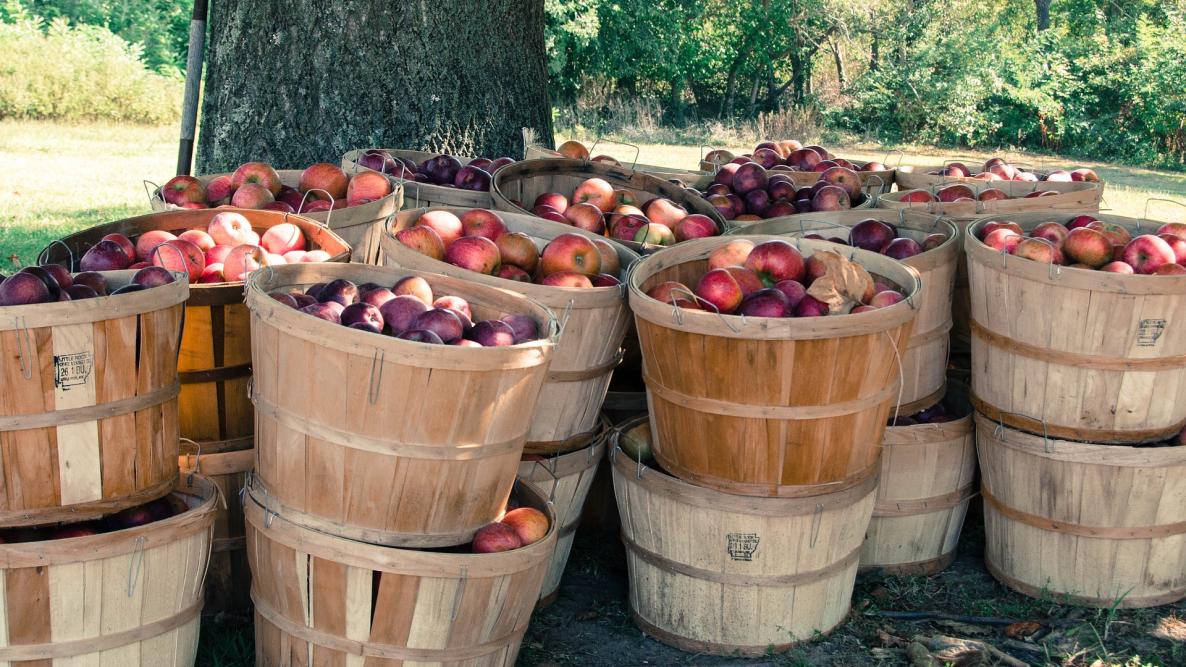
Apples in a bushel not only vary in quantity but also in quality. The number of apples in a bushel can give an indication of the potential yield and productivity of an apple harvest. However, it is important to note that the size and weight of the apples can vary, affecting the overall quality. Farmers and distributors need to ensure that the apples in a bushel meet the desired standards in terms of size, color, and taste. This ensures that consumers receive consistent and high-quality apples when purchasing them by the bushel.
How Many Apples Equal A Bushel
In agricultural measurements, the number of apples in a bushel can vary depending on the size and weight of the apples. On average, a bushel of apples can contain around 126 to 136 medium-sized apples. However, it is important to note that this number can range depending on factors such as the variety of apple and the specific bushel size being used. The quantity of apples in a bushel is a crucial factor to consider for farmers and distributors, as it helps determine the potential yield and profitability of apple harvests.
Factors Affecting Apple Quality In A Bushel
Several factors can significantly impact the quality of apples in a bushel. One of the most important determinants is the environmental conditions during the growing season. Temperature and light exposure can affect the development of external features such as color and size, as well as the accumulation of dry matter. However, extreme temperatures or excessive exposure to sunlight can also cause undesirable disorders, such as sunburn. Additionally, agronomic factors, such as irrigation, fertilization, and pest control, can influence the overall health and quality of the apples in a bushel. It is crucial for farmers to carefully manage these factors to ensure optimal apple quality.
Modern Uses Of Bushels In Agricultural Industry
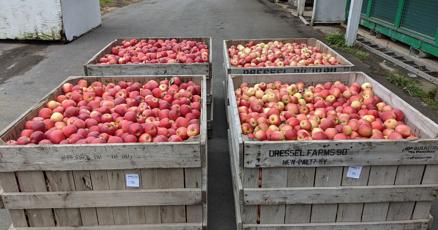
Modern Uses of Bushels in the Agricultural Industry can be seen in various aspects of farming operations. Technology has played a crucial role in integrating bushel measurements into modern agricultural practices. Farmers now use digital tools and automated systems to accurately measure and track the volume of crops in bushels. This helps in efficient harvest management and distribution planning. Furthermore, standardized bushel measurements are essential for fair trade practices and ensuring consistency in the agricultural market. Implementing these measurements enhances transparency and facilitates smooth transactions between farmers, distributors, and consumers. The modern use of bushels continues to play a vital role in maintaining productivity and efficiency in the agricultural industry.
Technology Integration For Measuring Bushels
Technology has revolutionized the way bushels are measured in the agricultural industry. Farmers now have access to advanced digital tools and automated systems that accurately measure and track the volume of crops in bushels. These technologies use sensors and electronic scales to ensure precise measurements, eliminating the need for manual counting and estimation. Moreover, these systems integrate with farm management software, allowing farmers to efficiently manage and analyze their harvest data. This technology integration has greatly enhanced the accuracy and efficiency of measuring bushels, leading to better harvest management and distribution planning.
Implementing Standardized Bushel Measurements In Agriculture
In order to ensure consistency and accuracy in agricultural measurements, it is crucial to implement standardized bushel measurements. This can be done by establishing clear guidelines and regulations that define the exact volume and weight of a bushel for different types of crops. Additionally, training programs and educational initiatives can be developed to educate farmers and workers about the proper use of bushel measurements. By implementing standardized bushel measurements, farmers can effectively compare and trade their produce, leading to fair prices and improved efficiency in the agricultural industry.
Conclusion
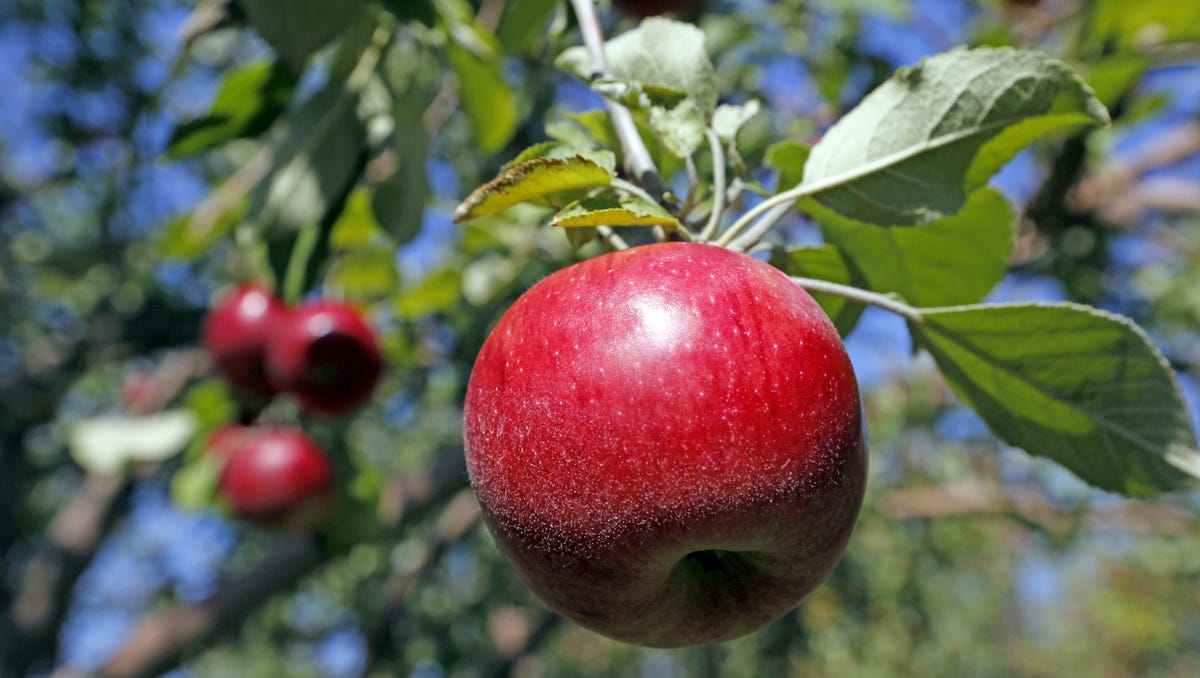
In conclusion, the use of bushels as a standardized agricultural measurement plays a crucial role in the industry, particularly when it comes to apples. The evolution of apple bushel sizes has had a significant impact on harvesting and distribution practices. By understanding the quantity and quality of apples in a bushel, farmers can effectively trade their produce and ensure fair prices. The integration of technology in measuring bushels further enhances efficiency and accuracy. Implementing standardized bushel measurements is essential for promoting consistency and fairness in the agricultural industry. As the future unfolds, advancements in agricultural measurements and bushel standards will continue to drive innovation and productivity.
Importance Of Apples In A Bushel In Agricultural Operations
Apples in a bushel play a vital role in agricultural operations. They serve as a standardized unit of measurement, allowing farmers to accurately quantify and trade their apple produce. The bushel measurement ensures consistency and fairness in the industry, as it provides a reliable benchmark for apple quantities. Additionally, apples in a bushel are crucial in determining the pricing and logistics of apple harvesting and distribution. Without this standardized measurement, it would be challenging for farmers to effectively manage their apple crops and meet the demands of the market.
Future Trends In Agricultural Measurements And Bushel Standards
Future trends in agricultural measurements and bushel standards are centered around technology integration and sustainability. With advancements in agricultural practices, farmers may adopt smart sensors and automated systems to accurately measure and track crop quantities. This would eliminate human error and provide real-time data for better decision-making. Additionally, there is a growing emphasis on sustainability, leading to the development of eco-friendly materials for bushels and packaging. These efforts aim to reduce waste and promote environmentally conscious practices in the agricultural industry. Such innovations will continue to shape the future of bushel standards and agricultural measurements.
FAQ About “apples In A Bushel: Exploring Agricultural Measurements”
Q: What is the main focus of the “Apples in a Bushel” app?
A: The main focus of the app is to help users explore and understand various agricultural measurements, particularly in the context of apple production and bushels.
Q: How can I benefit from using this app?
A: By using this app, users can learn about different measurement units, conversion factors, and calculations related to agriculture, specifically in the apple industry. It can help with understanding productivity, yield, and other agricultural metrics.
Q: Is the “Apples in a Bushel” app suitable for all levels of agricultural knowledge?
A: Yes, the app is designed to cater to a wide range of users, from beginners with little agricultural knowledge to experts in the field. It offers both basic information and more advanced insights into agricultural measurements.
Q: Can I use the app offline?
A: Yes, the app offers offline functionality, allowing users to access information and perform calculations even without an internet connection. This feature ensures convenience, especially in areas with limited connectivity.
Q: Are there interactive features in the “Apples in a Bushel” app?
A: Yes, the app includes interactive tools and calculators that enable users to input specific data and receive instant results. These interactive features enhance user engagement and facilitate learning through hands-on exploration.
Q: How frequently is the app updated with new information or features?
A: The app is regularly updated with the latest industry standards, measurements, and features to ensure that users have access to current and relevant agricultural information. Updates may include new tools, calculators, or educational content.

Let’s be honest—Parma, OH has its fair share of neighborhood joints, as do the surrounding Cleveland suburbs. There are bar food offerings, happy hour, and an enjoyable environment in which to watch the Tribe and Browns.
With Sidekicks Tavern, though, you get all that and then some. You get a bar menu, a warm staff, and a great group of fun customers to hang with.
In the words of one of our favorite regulars, Sidekicks is a hidden gem.